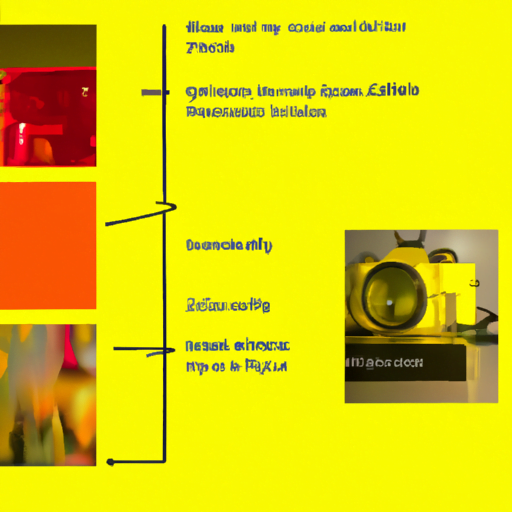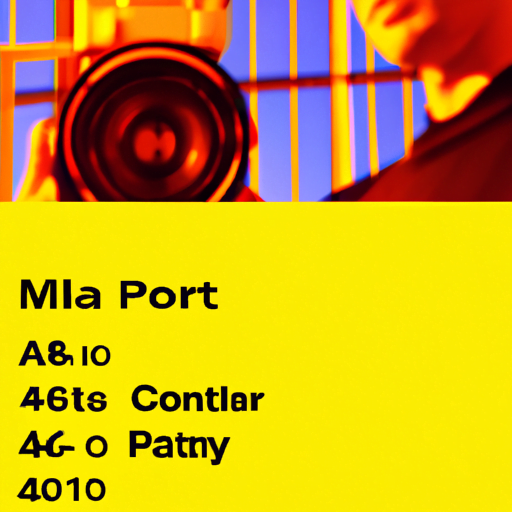
-
Table of Contents
- Designing for Multilingual Interfaces
- The Importance of Multilingual Interfaces
- Challenges in Designing for Multilingual Interfaces
- Best Practices for Designing Multilingual Interfaces
- 1. Internationalization from the Start
- 2. Understand the Target Audience
- 3. Use Clear and Concise Language
- 4. Test and Iterate
- 5. Provide Language Switching Options
- Case Studies
- 1. Airbnb
- 2. Facebook
- Conclusion
Designing for Multilingual Interfaces

As the world becomes increasingly interconnected, the need for multilingual interfaces has become more important than ever. With the rise of globalization and the internet, businesses and organizations are reaching a global audience, and designing interfaces that cater to users who speak different languages is crucial. In this article, we will explore the challenges and best practices of designing for multilingual interfaces, and how it can enhance user experience and drive business success.
The Importance of Multilingual Interfaces
With over 7,000 languages spoken worldwide, designing interfaces that support multiple languages is essential for reaching a diverse user base. Here are some key reasons why multilingual interfaces are important:
- Global Reach: By offering multilingual interfaces, businesses can expand their reach to international markets and tap into new customer segments.
- User Experience: Providing content in users’ native languages improves their overall experience, making it easier for them to navigate, understand, and engage with the interface.
- Trust and Credibility: When users see content in their own language, they feel a sense of trust and credibility towards the brand or organization.
- Competitive Advantage: In a global marketplace, offering multilingual interfaces can give businesses a competitive edge over their competitors who only cater to a single language group.
Challenges in Designing for Multilingual Interfaces
Designing for multilingual interfaces comes with its own set of challenges. Here are some common challenges that designers face:
- Text Expansion: Different languages have different sentence structures and word lengths, which can lead to text expansion. Designers need to account for this expansion to ensure that the interface remains visually appealing and functional.
- Cultural Considerations: Translating content is not just about converting words from one language to another. Designers need to consider cultural nuances and adapt the interface to suit the target audience’s preferences and expectations.
- Directionality: Some languages are read from right to left (RTL), while others are read from left to right (LTR). Designers must accommodate for both directions to ensure a seamless user experience.
- Iconography and Symbols: Icons and symbols may have different meanings or cultural associations in different languages. Designers need to be mindful of these differences and choose universally understood icons or adapt them accordingly.
Best Practices for Designing Multilingual Interfaces
Designing multilingual interfaces requires careful planning and consideration. Here are some best practices to follow:
1. Internationalization from the Start
Internationalization is the process of designing and developing a product in a way that makes it easy to localize for different languages and cultures. By considering internationalization from the start, designers can save time and effort in the localization process. Some key considerations include:
- Using Unicode for character encoding to support a wide range of languages.
- Designing a flexible layout that can accommodate text expansion.
- Separating content from code to facilitate translation.
2. Understand the Target Audience
Before designing a multilingual interface, it is crucial to understand the target audience’s language preferences, cultural background, and user expectations. Conducting user research and gathering insights can help designers make informed decisions about language selection, content presentation, and visual design.
3. Use Clear and Concise Language
When translating content, it is important to use clear and concise language that is easily understood by users. Avoid complex sentence structures, idioms, and cultural references that may not translate well. Consider using plain language and providing context to ensure clarity.
4. Test and Iterate
Testing the multilingual interface with users who speak the target languages is crucial to identify any usability issues or language-specific problems. Conducting usability tests, gathering feedback, and iterating on the design can help improve the overall user experience.
5. Provide Language Switching Options
Offering users the ability to switch between languages is essential for multilingual interfaces. Provide clear and easily accessible language switching options, such as dropdown menus or flags, to allow users to choose their preferred language.
Case Studies
Let’s take a look at two case studies that highlight the importance of designing for multilingual interfaces:
1. Airbnb
Airbnb, a global online marketplace for lodging and tourism experiences, understands the significance of multilingual interfaces. With listings in over 220 countries and regions, Airbnb offers its platform in 62 languages. By providing localized content and user interfaces, Airbnb ensures that hosts and guests can communicate effectively, leading to a seamless user experience and increased trust in the platform.
2. Facebook
Facebook, the world’s largest social media platform, supports over 100 languages. Facebook’s multilingual interface allows users from different countries and language backgrounds to connect and communicate with each other. By providing localized interfaces, Facebook fosters a sense of inclusivity and enables users to engage with the platform in their preferred language.
Conclusion
Designing for multilingual interfaces is essential for businesses and organizations that aim to reach a global audience. By considering the challenges and best practices outlined in this article, designers can create interfaces that cater to users from different language backgrounds, enhance user experience, and drive business success. Remember, designing for multilingual interfaces is not just about translation, but also about understanding cultural nuances and adapting the interface to suit the target audience’s preferences. Embracing multilingualism is a powerful way to connect with users around the world and build trust and credibility in an increasingly globalized world.
